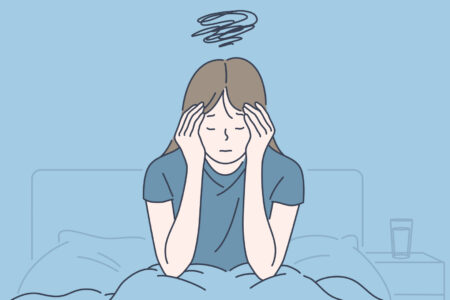
As I read of medical aid in dying proponents’ opposition to Dr. Harvey Schipper’s referring to the treatment of people with disabilities under the Nazi regime, I was reminded of a criticism by a member of the audience when I made similar comments during a presentation long ago.
In that presentation I talked about the role played by the practice of eugenics in the history of disability. I was told in no uncertain terms that it was unacceptable for me to have spoken of the killing of people with disabilities in Nazi-controlled Germany. Why? Because, here in Canada, there might be people of German origin in the audience who would be offended by such comments! To my critic, the issue was taboo! I disagreed. Postwar Germany has never held such views. The German people have worked diligently since the Second World War to ensure that the Nazi atrocities toward people with disabilities, embedded as they are in history, will not be repeated.
I cannot believe that opposition to Schipper’s comments is based either on denial of those Nazi realities or on sensitivities such as those mentioned above. As Catherine Frazee notes in her recent response to the opposition to Schipper, the Nazi euthanasia program is part of the history of her life as a disabled person, and it is also part of the history of the medical profession. She reminds us that those “who would forbid us to speak of this history or who would police our speech as strident and unwelcome can only fuel doubt about whether its lessons have been learned.”
If, indeed, some of us are reluctant to heed those lessons of the Nazi era in Germany, perhaps we could look at the lessons offered by our own history of eugenics. For a relatively recent example of euthanasia, according to Drs. D.P. Girvan and C.A. Stephens in an article (paywall) on the surgical management of a specific serious medical condition, 27 newborn babies were left to starve to death at Toronto’s renowned Hospital for Sick Children in the 20-year period ending in December 1971. They all had the medical condition, for which the standard and only treatment is immediate surgery. They did not receive the surgery. In the same period, in the same hospital, 120 other newborn babies with the same serious medical condition did receive the standard surgery, and 67 percent of those babies survived. The difference between the babies who were given the privilege of life through the necessary surgical intervention and the babies for whom euthanasia was seen as the appropriate solution was that the 27 babies who were euthanized had Down syndrome.
In an even more recent example, in 1983, Dr. Nachum Gal was charged with first-degree murder and eight additional charges in the death of a 16-hour-old baby in an Edmonton hospital. The baby’s parents were given to understand that their daughter had died because of brain damage resulting from lack of oxygen at birth. When it became known that Gal had ordered the injection of an abnormal and massive dose of morphine — the child died soon after receiving it — an inquiry was held. Tissue or blood samples were not taken at the time of the baby’s death, and Judge Carl Rolf decided that without that information it was “not possible to determine the cause of death,” even though the medical examiner had altered the cause from “birth asphyxia” to “morphine intoxication.” In any case, by that time, Gal had safely returned to Israel, whose government refused to extradite him to face charges.
The fact that public acceptance of the notion of euthanasia for people with disabilities was not automatic was long ago recognized in the standard medical texts, such as Tredgold’s Textbook on Mental Deficiency (originally published in 1908 and used for much of the past century in most of the Western world — including Canada). In the 1963 (10th) edition of this textbook, the pros and cons of euthanasia are in the chapter titled “The Prevention of Subnormality,” where Tredgold suggested that “probably most people would agree that it would be better were there no defectives,” but that did not mean that public opinion would condone “actively destroying them all.” Significantly, Tredgold made what today seems to be an utterly shocking and unacceptable distinction between “high grade defectives [who] are capable of enjoying life, forming loving relationships with others, and of performing useful work” and “low-grade defectives” whose “care and support, whether in their own homes or institutions, absorb a large amount of the time, energy and money of the normal population.” Tredgold further opined that these “low-grade defectives” could not be employed to any advantage, and many of them are “utterly helpless, miserable, deformed, repulsive, unlovable and unloving.” Suggesting that it might be “time for society to consider whether euthanasia should be permitted at the request of a parent or a guardian,” he noted that “many clinicians believe that it would be an economical and humane procedure were their existence to be painlessly terminated, and that this would be welcomed by a large proportion of parents.”
In Canada — possibly for the reason Tredgold cited, that public opinion might not tolerate the deliberate destruction of people with intellectual disabilities, but nevertheless to our collective shame — sterilization and segregation were the preferred solutions to dealing with the “societal problem” of people we now recognize as having intellectual and developmental disabilities. Appalling as it is, our own history is well documented. Pretending such practice did not exist or trying to stifle its telling is cowardly, to say the least. It happened!
If recorded history is not sufficient, perhaps a personal example might help. My son has Down syndrome. He was born in 1964 (the year after the appearance of Tredgold’s 10th edition). At the funeral of his dad’s oldest friend, we were introduced to the son of another former high school classmate, who was a doctor. The doctor immediately asked our son’s age and, unsuspectingly, I told him. “Ahh,” was the response, “just before amniocentesis [was introduced]!” In other words, “Ahh! Born just before you would have been free to abort him!” While the graveside of a dear friend was hardly the place for me to give the response that was demanded by that shocking comment, I will forever regret my failure to do so.
It has taken many lifetimes of pain, insult and unhappiness for the persistent abuse of people with disabilities to be recognized and their rights enunciated in Canada. For people with disabilities, euthanasia has long been an issue of concern.
The abuse they have experienced is not restricted to euthanasia, sterilization, institutionalization or selective prenatal destruction, nor is it just certain doctors who inflict it. As Catherine Frazee points out, “People with disabilities have suffered violence and harm at the hands of doctors, parents and caregivers.” Subtler but still pervasive harm has been done by the indifference of much of society to the social and personal well-being of people with disabilities, which has led to their historical exclusion from formal education, employment opportunities and, in general, living a “normal” lifestyle. In today’s autonomy-focused society, this indifference makes people with disabilities particularly vulnerable. Frazee’s reference to the Nazi euthanasia program is a timely reminder of this for all of us.
We cannot let a political argument about our selfish personal desires to choose when and how we die with medical assistance detract from the imperative to respect the inherent vulnerability of people with disabilities in this context.
Photo: Shutterstock/Nick Starichenko
Do you have something to say about the article you just read? Be part of the Policy Options discussion, and send in your own submission. Here is a link on how to do it. | Souhaitez-vous réagir à cet article ? Joignez-vous aux débats d’Options politiques et soumettez-nous votre texte en suivant ces directives.








